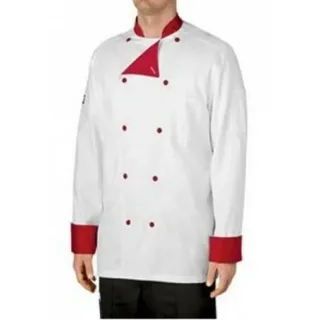When it comes to working in a professional kitchen, every detail matters — from the sharpness of a knife to the quality of your uniform. Chef wear pants might not get as much spotlight as a chef’s jacket, but they play a crucial role in comfort, safety, and performance throughout long, demanding shifts. Whether you’re a professional chef, culinary student, or kitchen staff, understanding the importance and features of chef wear pants will help you choose the best pair to suit your needs.
In this comprehensive guide, we’ll explore everything you need to know about chef wear pants, including their essential qualities, types, materials, safety considerations, and how to select the perfect pair for your kitchen environment.
Why Chef Wear Pants Matter
Kitchen environments are fast-paced, often hot chef wear pants, and can be physically demanding. Chef wear pants are designed specifically to meet these challenges by offering:
-
Comfort and flexibility: Allowing free movement for chopping, lifting, and standing for hours.
-
Durability: Withstanding stains, frequent washing, and wear from rigorous kitchen work.
-
Safety: Protecting against spills, burns, and slips.
-
Professional appearance: Maintaining a clean, unified look in the kitchen.
Wearing the right pants enhances productivity and reduces distractions caused by discomfort or safety concerns.
Key Features of Quality Chef Wear Pants
1. Material Composition
The material is arguably the most important factor for chef pants. Most chef pants are made from blends of cotton and polyester, combining breathability with durability.
-
Cotton: Known for softness and breathability, cotton keeps you cool but can wrinkle and wear out faster.
-
Polyester: Adds durability and wrinkle resistance, helping pants retain their shape and look professional longer.
-
Spandex or elastane: Often blended in small amounts for stretch, providing enhanced flexibility and comfort.
A typical blend might be 65% polyester and 35% cotton, offering the best of both worlds.
2. Breathability and Moisture Wicking
Kitchens get hot and sweaty, so fabrics that wick moisture and allow air flow are preferred. Some chef pants include moisture-wicking technology or mesh ventilation panels to keep the wearer dry and comfortable.
3. Fit and Comfort
Chef pants come in various fits, including:
-
Relaxed fit: Loose and roomy, allowing maximum freedom of movement.
-
Slim fit: More tailored for style but may restrict movement if too tight.
-
Elastic waistbands: Provide adjustability and extra comfort.
-
Drawstrings: Allow for quick and easy size adjustment.
Many chefs prefer pants with an elastic or drawstring waist for comfort during long shifts.
4. Durability and Stain Resistance
Pants in the kitchen face constant exposure to oils, sauces, and heat. Look for pants with:
-
Double-stitched seams: To prevent tearing.
-
Reinforced knees: For durability during kneeling or extended movement.
-
Stain-resistant coatings or fabrics: That repel spills and stains, simplifying cleaning.
Common Styles of Chef Wear Pants
1. Traditional Checkered Pants
The classic black-and-white checkered pattern is iconic in culinary wear. This pattern helps disguise stains and spills and is often required in many kitchens for uniformity.
2. Solid Color Pants
Many kitchens allow or prefer solid black, white, or navy chef pants for a sleek, modern look. Black pants are popular due to their ability to hide stains.
3. Cargo Chef Pants
For chefs who need extra storage, cargo pants with multiple pockets provide convenience for carrying small tools or towels.
Safety Considerations in Chef Pants
Safety is paramount in kitchen clothing, and pants contribute significantly to protecting the wearer:
-
Fire resistance: While most chef uniform near me are not inherently flame-resistant, some are made with treated fabrics to reduce fire hazards.
-
Slip resistance: Look for pants designed to be worn with non-slip shoes, as many pants include longer leg lengths to cover the tops of shoes and prevent slipping.
-
Breathable fabrics: To prevent heat stress and keep chefs cool, reducing fatigue and accidents.
How to Choose the Right Chef Wear Pants
When selecting chef pants, consider these factors to make an informed decision:
| Factor | What to Consider |
|---|---|
| Material | Blend of cotton/polyester with moisture-wicking properties |
| Fit | Relaxed for comfort or tailored for style; elastic waistband preferred |
| Durability | Reinforced stitching, stain resistance, fade-resistant |
| Safety | Flame-resistant treatments, length appropriate for shoes |
| Design | Compliance with kitchen dress code (color, pattern) |
| Price | Balance quality with budget; investing in quality saves long-term |
| Brand reputation | Established culinary uniform brands often ensure quality and warranty |
Caring for Chef Wear Pants
Proper care extends the life of chef pants:
-
Follow washing instructions: Usually machine washable in warm water; avoid harsh detergents.
-
Avoid bleach: Can damage fabric and cause discoloration.
-
Air dry or tumble dry low: To prevent shrinkage and fabric damage.
-
Iron carefully: Use low heat if necessary, especially on blended fabrics.
-
Rotate uniforms: Have multiple pairs to rotate, minimizing wear and extending lifespan.
Expert Recommendations and Trusted Brands
Choosing chef wear pants from trusted culinary uniform suppliers guarantees quality and adherence to industry standards.
-
Chef Works: Known for durable and stylish chef pants.
-
Dickies: Offers heavy-duty, comfortable options with stain resistance.
-
Bragard: Premium quality pants favored in haute cuisine.
-
Uncommon Threads: Budget-friendly with good reviews for comfort and durability.
When possible, read customer reviews and consult colleagues or industry professionals for brand insights.
Conclusion
Chef wear pants are an indispensable part of culinary apparel that combines function, comfort, and professionalism. Selecting the right pair involves understanding material blends, fit preferences, durability needs, and safety features — all tailored to the demanding kitchen environment.


